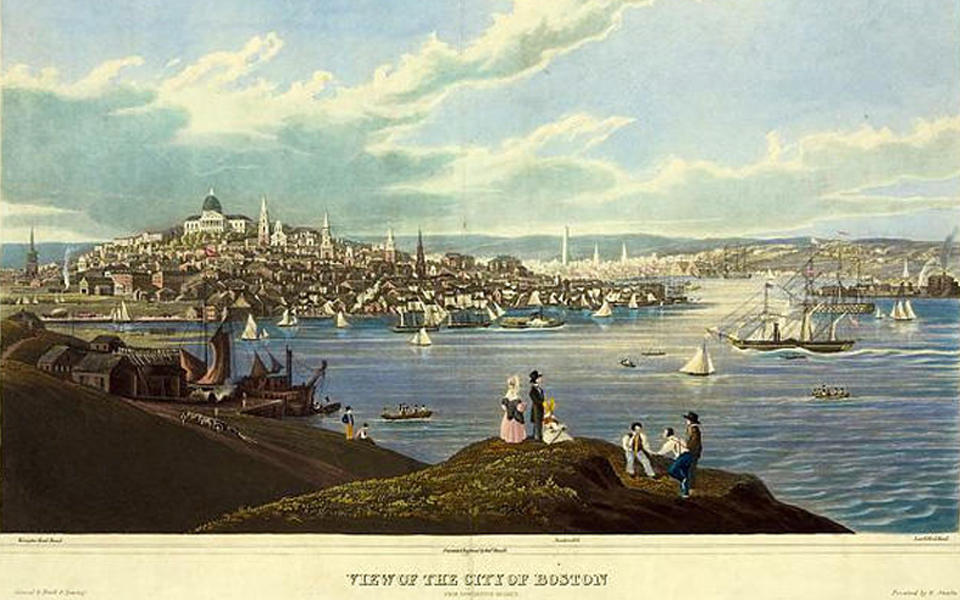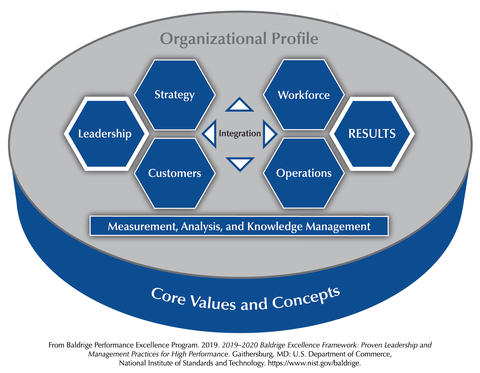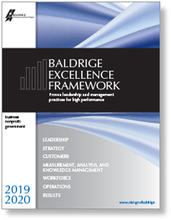Blogrige
The Official Baldrige Blog

One of my first forays into blogging for the Baldrige Program was almost 10 years ago in a blog that combined my affinity for the Baldrige mission—to improve the competitiveness and performance of U.S. organizations for the benefit of all U.S. residents—and my love for history, especially historical fiction where you can imagine what might have been, could be, and eventually became. Along those lines, I decided to update this blog written in July 2010, hopefully using what I now understand better about the great benefit of having a framework to manage an operation—or perhaps even a new country.
The power of the Baldrige Framework and its Criteria for Performance Excellence is its use both as a model for improvement and as a management tool for virtually any organization, in any sector of the U.S. economy. I thought I would test this out.

Organizational Profile
Let's say, for example, that you are a recently established holding company in the nonprofit sector. The first thing you might do in using the Criteria as a management tool or framework is to answer the questions in the Organizational Profile. This task will immediately help you identify potential gaps in key information and focus on key performance requirements and results.
So, you might answer that your organization's main product offerings are tobacco, cotton, and various industrial pursuits such as printing. Your delivery mechanisms are via ship, horse-drawn carriage, and door-to-door delivery personnel.
Your organizational culture would take into account your 13 independently managed subsidiaries, spread across vast lands with varying urban and rural communities, and your workforce profile would need to include all the diverse segments within your communities: farmers, merchants, laborers, sailors, etc.
As a new organization, especially one representing 13 independent sites, it might be more difficult for you to answer certain questions in the Organizational Profile, and struggling with these questions might help reveal your first gaps to address. What is the purpose of your holding company? Is it to guide the 13 subsidiaries to stand alone? Or is it to provide oversight and benefits under a central governance system? And what are your values? You might answer that one of your values is that all men are created equal (if you are using the Baldrige Criteria as a management tool, you would instantly see a gap when you list your strategic challenges and note that each subsidiary treats its workforce differently and some in conflict with this value; values then are not fully deployed).
The Criteria's Organizational Profile would provide you with a foundation for your organization. For example, you might answer that your governance system consists of a governor and elected officials from each subsidiary meeting at a central location, Philadelphia, for a series of continental congresses. But you might immediately see an opportunity for improvement when you consider the vast distances that some senior leaders need to travel to participate, knowing that your most southern site felt it was too far to send its leaders. As part of your strategic planning, this might lead you to consider changing your central location.
By completing the Organizational Profile, you have made the Criteria relevant to you; now you can consider the categories of the Criteria based on the key facts about your organization.
Category Examples
Let's consider category 2: Strategy. The Baldrige Criteria ask about your short- and long-term planning horizons, as well as who participates in planning. You might gather input from leaders from across your subsidiaries and from other stakeholders, for example, through their letters, articles, and ideas on the format of government and separation of powers. The Criteria questions could help guide you to outline your strategic opportunities—for example, expanding into western lands, developing new trading partners, or creating a sustainable financial system—and figuring out which are intelligent risks to pursue. The Criteria might even help the holding company to see some potential blind spots, especially in regards to the engagement and requirements of the workforce and customers, both current and potential.
Another example of how the Criteria could guide this holding company can be found in category 3, which asks about your key communication mechanisms with customers. By answering the questions in the Organizational Profile, you know that your customers come from very different urban and rural areas and thus require different means of communication. You now know that distributing broadsheets and nailing them to a liberty tree works for your Boston community, but you will need to develop a different communication method for your farmers out in the country. Your need for immediate, two-way feedback from customers might be especially important if one of your strategies is to unite your subsidiaries.
And what about category 6: Operations? Let's say that you determined in your Organizational Profile that one of your core competencies is that you have a unique capability in tobacco farming. Category 6, then, would guide you in designing, managing, and improving work processes around such farming to capitalize on that core competency, taking into account your workforce and supply network, so that this capability might help guarantee your sustainability as a new enterprise. For this work process, you will have to think through key requirements and design concepts such as consideration of risk and the need for agility. How will you determine if this work process is delivering on customer value for your success now and into the future?
So, can the Baldrige Criteria really serve as a management tool or framework to guide any organization? I think this test shows it can!
And just think how it might have helped guide a new holding company in 1776 to think about its leadership; strategy; customers; measurement, analysis, and knowledge management; workforce, and operations based on how it answered the questions in the Organizational Profile.

Baldrige Excellence Framework
The Baldrige Excellence Framework has empowered organizations to accomplish their missions, improve results, and become more competitive. It includes the Criteria for Performance Excellence, core values and concepts, and guidelines for evaluating your processes and results.
Purchase your copy today!
Available versions: Business/Nonprofit, Education, and Health Care
About the author
Related Posts
Comments
Very clever.






Love the article